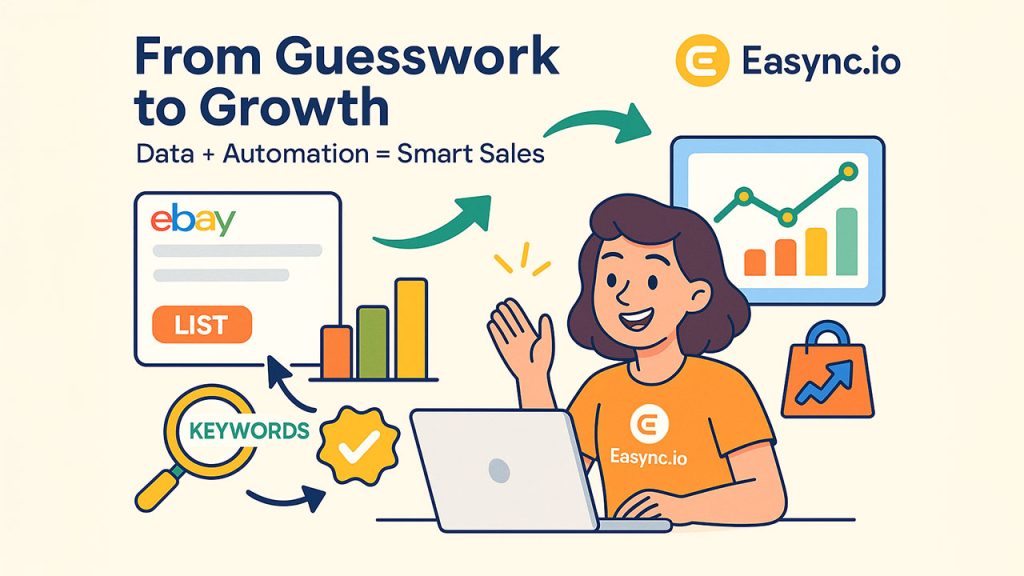For millions of small businesses, eBay is still a window to global commerce and Web notoriety but also a competitive maze. With more than 130 million active buyers and 1.9
For millions of small businesses, eBay is still a window to global commerce and Web notoriety but also a competitive maze. With more than 130 million active buyers and 1.9 billion live listings, the platform’s heft is both its best asset and greatest obstacle. To stand out in such a broad marketplace takes more than strong products or low prices — it takes data.
In 2025, eBay’s sellers are turning to analytics-driven software to close that gap. The new crop of eBay listing tools not only automate uploads; they turn information into strategy by cranking algorithms, processing behavioral data and training AI models to tweak listings in ways that reliably predict demand. The result is a quiet revolution in how sellers fight — and win.
The Transition From Touch to Measurable

A decade ago, eBay listing was mostly manual. Sellers relied on catchy titles, solid photos and hope. These days, automation takes care of much of the grunt work and analytics guide the creative choices and strategic calculations that go into each listing.
Current eBay listing services, like Easync. io, AutoDS and Zik Analytics — tracks and processes forever the stream of real-time data coming in: pricing changes, keyword merry-go-rounds, click-through rates and buyer search habits. Rather than just helping to manage listings, these sorts of tools now predict which will sell the best, when prices should be altered and even how titles should be worded for maximum visibility.
And the between 25% and 30% higher sales conversion rates for sellers using enhanced listing tools?” The answer is simple: Algorithims can find correlations that human intuition would miss. If some keywords repeatedly lead to more sales or some specific product photo leads with better engagement, it automatically makes the software adjust.
AI and Predictive Analytics: The Next Frontier
The latest version of the eBay listing software includes an AI model that doesn't only give you historical performance reports, but also tells you future potential. Machine learning examines enormous data sets to predict what will trend and what will be most competitive.
For instance, the price-fluctuation and source-monitoring software from Easync.io monitors competitor listings, stock, and shifts in the market. If it sees movement—a seasonal item taking off in search terms, for example—the software will reprice the product automatically or highlight related listings above the fold.
Predictive analytics also protect sellers from costly mistakes. Rather than speculating whether something will sell, sellers have their data-based "demand score" based on cumulativebuyer activity. That makes the playing field even for small, medium-sized business versus large business.
With e-commerce data sets growing 25 percent yearly (IDC, 2024), listing software driven by artificial intelligence is increasingly the basis for an eBay business plan. The 2025 hottest sellers are not the fastest listers but the most brilliant data interpreters.
Turning Metrics Into Meaning
While analytics provide countless data points, the key is what the sellers do with the information. The most common performance metrics are the click-through rate (CTR), conversion rate, and average order value (AOV). Advanced sellers take the next step by utilizing the engagement heatmaps and price elasticity curves to optimize listings on the fly.
It's not conjecture. One UK-based retailer reported lowered return rates by 40 percent by making use of analytics from an eBay listing software to identify incorrect product categories and incorrect product listings. One US retailer even reported doubling sales weekly when they made use of keyword optimization techniques from AI-generated suggestions.
In other words, analytics aren’t just about identifying bestsellers—they’re about improving every stage of the buyer journey, from search visibility to post-purchase satisfaction.
The Broader Impact: From Sellers to Platforms
The increased emphasis on analytics is transforming eBay in the process. eBay's proprietary search algorithm, Cassini, puts listings that have strong levels of engagement and correct data high on their list. As sellers integrate tools that agree with those metrics, the market becomes streamlined, effective, and profitable by default.
That feedback loop is beneficial to everyone: sellers gain exposure, customers find product faster, and eBay enhances competitiveness against Amazon and Walmart Marketplace.
Analytics should advance from optimization to complete automation in the upcoming years. Sentiment analysis may be incorporated into listing software in the future, allowing for real-time buyer feedback analysis and dynamic listing refinement. This will make eBay selling an ecosystem that is practically self-correcting—data in, deals out—when combined with AI image recognition and predictive sourcing.
The Bottom Line
eBay listing software is how sellers effectively use data, which has become the currency of contemporary e-commerce. What started out as a handy tool has evolved into a decision-making tool that turns analytics into useful information.
The next generation of eBay sellers will resemble analysts more than merchants as machine learning continues to improve our understanding of consumer behavior. They will be able to read the signals of a marketplace that is driven by data rather than intuition.
Respond to this article with emojis






